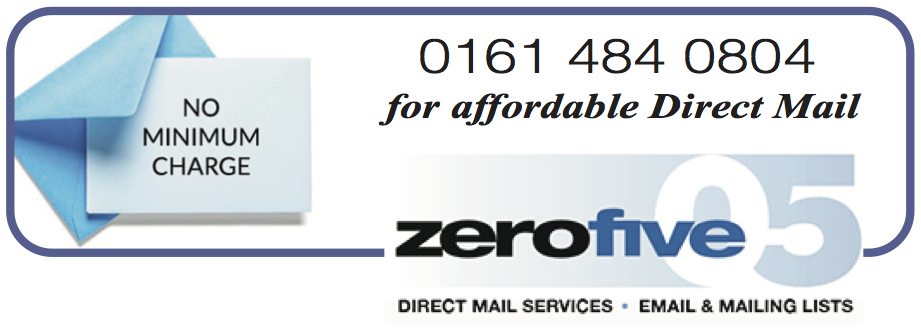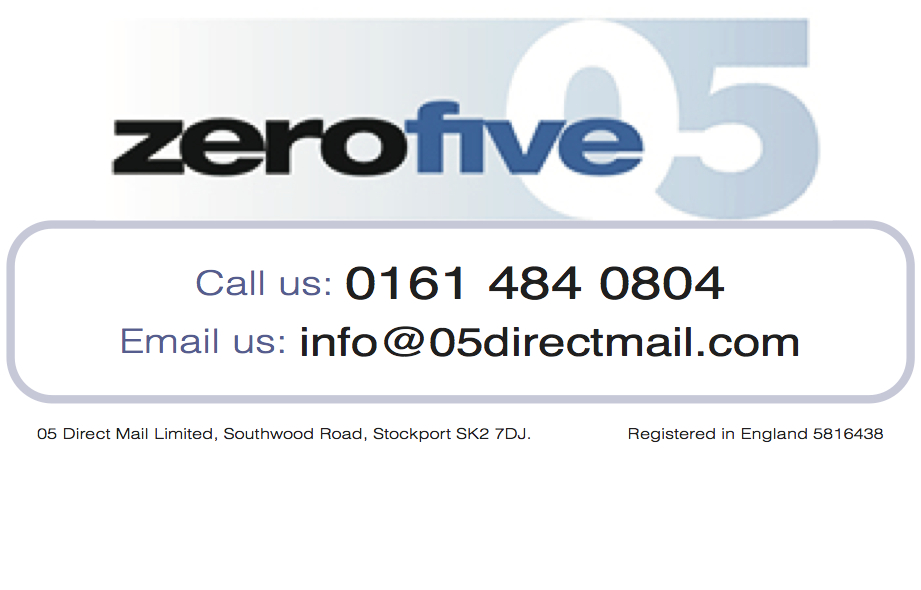
ABOUT US
05 Direct Mail Ltd is a family-run direct mail business situated in Stockport, South Manchester and was established in 2006. We specialise in low-cost small to medium size postal mailings. Unlike most mailing houses, our rates are charged virtually pro-rata whatever the quantity, meaning smaller mailings are more affordable as we don’t impose a minimum charge.
OUR SERVICES
- Personalised laser printing
- Hand & machine enclosing/fulfilment
- Envelope supply/printing
- Labelling & addressing
- Polywrapping (with biodegradable materials)
- Postage Discounts & Mailsort
- International mailing
- B2B and B2C mailing lists
- Email lists & telemarketing data
- Data processing & list management
WHY DIRECT MAIL?
Direct mail offers something special that digital marketing just can’t do. It puts a physical piece of mail directly into the hands of your target audience.
It’s personal, it’s tactile, and it stands out from the now overcrowded digital marketing scene. Well targeted Direct Mail campaigns can be very useful in most industry sectors but are particularly effective for local businesses and in particular reaching people less likely to engage with digital marketing.
The Data and Marketing Association claim direct mail has a higher response rate than email marketing. According to the DMA, direct mail can have up to a 4.4% response rate, whereas email just 0.12%.
In addition, direct mail’s shelf-life is also longer than digital marketing. While emails can be deleted with a click, a physical mailing piece is frequently kept for days or weeks.
05 Direct Mail Ltd is GDPR compliant and ICO registered so your data is safe.
LISTS & DATA SUPPLY – Postal, email and telemarketing
With over 23 years experience in supplying targeted marketing data and 17 years in Direct Mail, we can provide high quality, keenly priced marketing lists for postal, e-broadcast or telemarketing campaigns tailored to your specific requirements.
We charge a simple flat rate per site record, with no selection, delivery, or output fees.
HIGHLY ACCURATE EMAIL DATA
B2B Email lists of senior UK and overseas business contacts by name are selectable by job title, industry, company size and geography. Data counts are fast and all Email data we supply is maintained and updated regularly to provide the most reliable and accurate lists possible for E-broadcast. Lists can be tailored to your exact requirements based on your own specific criteria with free selections, delivery and output.
THE HIGHEST OF STANDARDS
We apply the same high standards to all mailing campaigns whatever the size. Our trade rates for fulfilment and personalising coupled with the lowest postal tariffs makes our prices pretty much unbeatable. Whether posting within the UK or to international destinations, using our ‘access’ postal accounts you will receive all the cheapest postal rates you expect from a mailing house, including Mailsort.
We handle direct mail for a variety of businesses throughout the UK but if you are looking for a reliable, local mailing house in the North West including Lancashire, Cheshire, Merseyside or the Greater Manchester area in particular, we are ideally situated close to the M60 in Stockport, just 7 miles south of Manchester.
Please get in touch for a competitive quote
